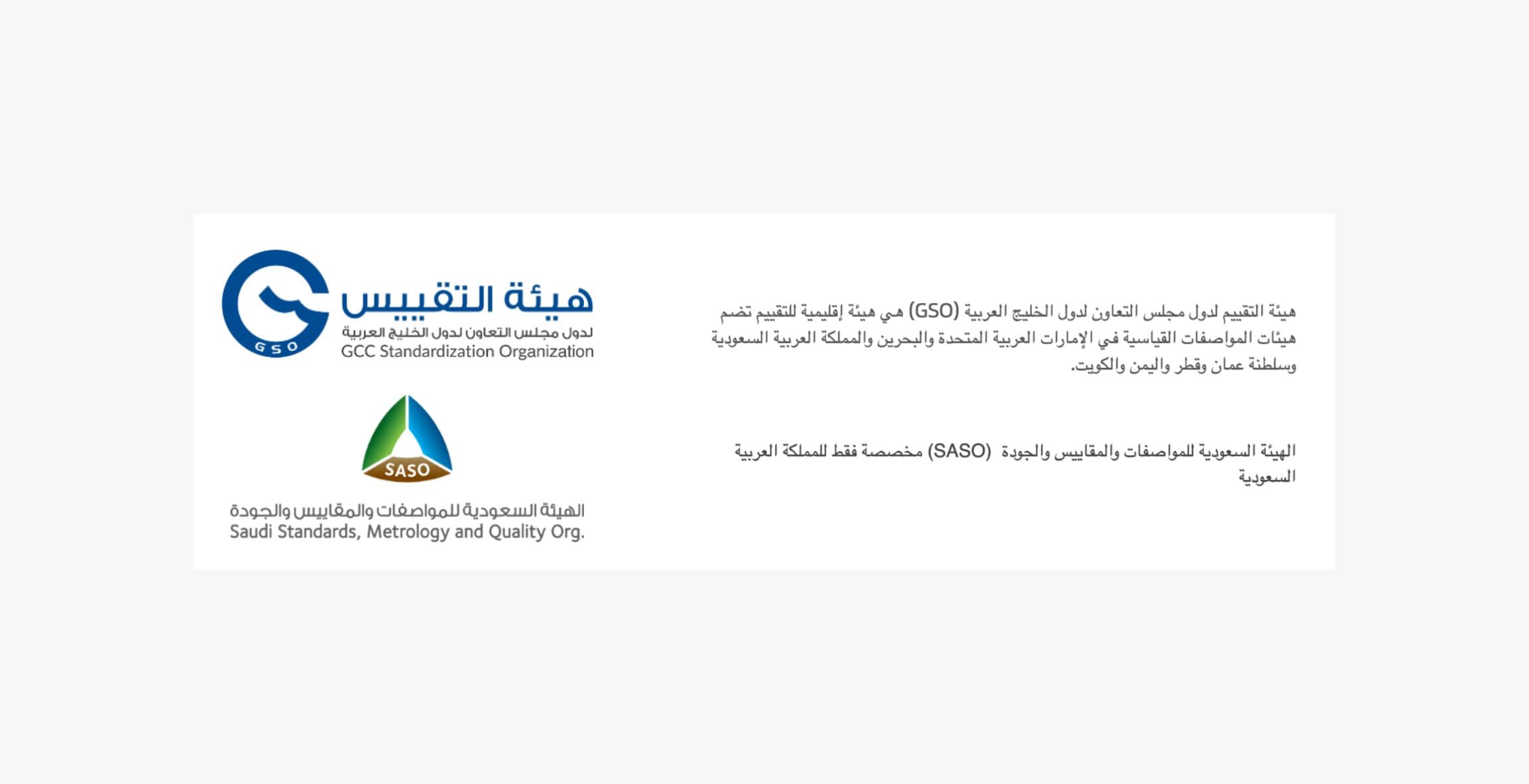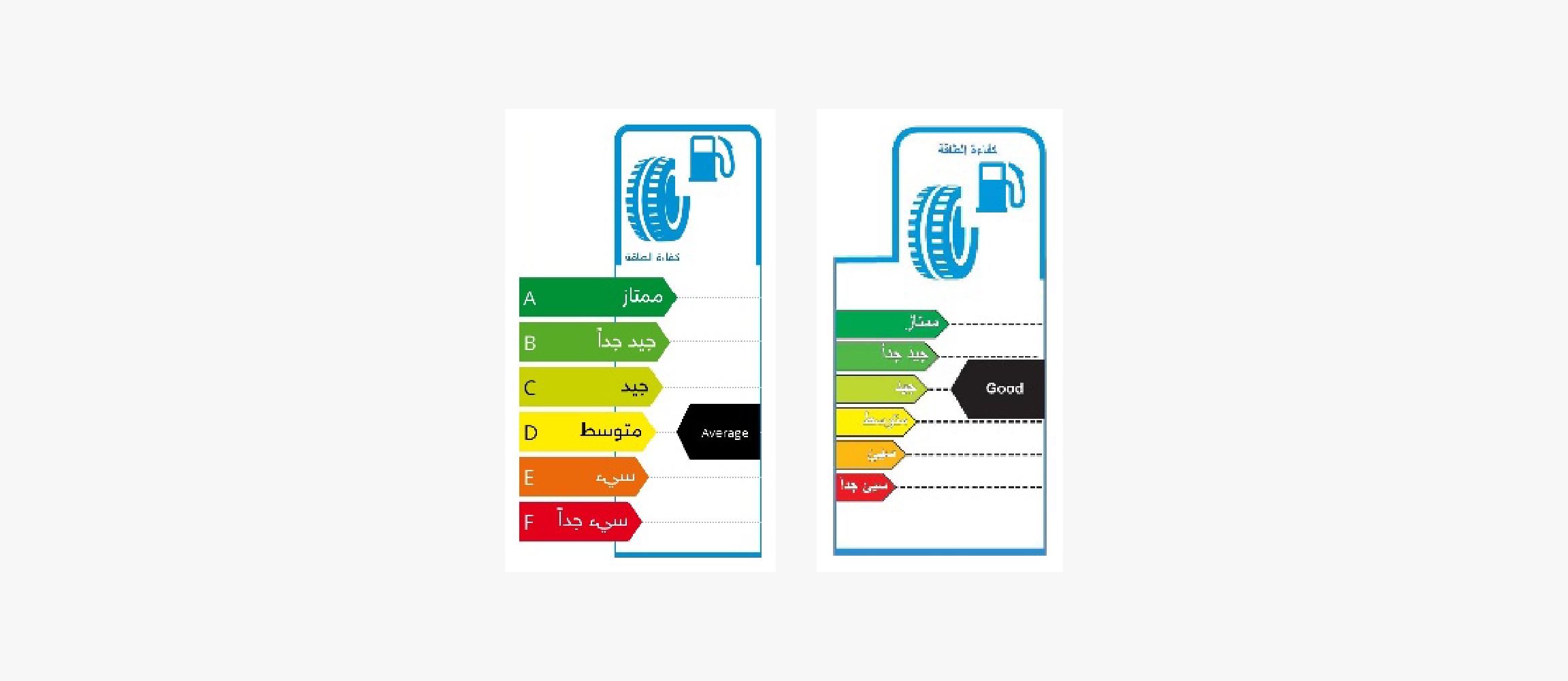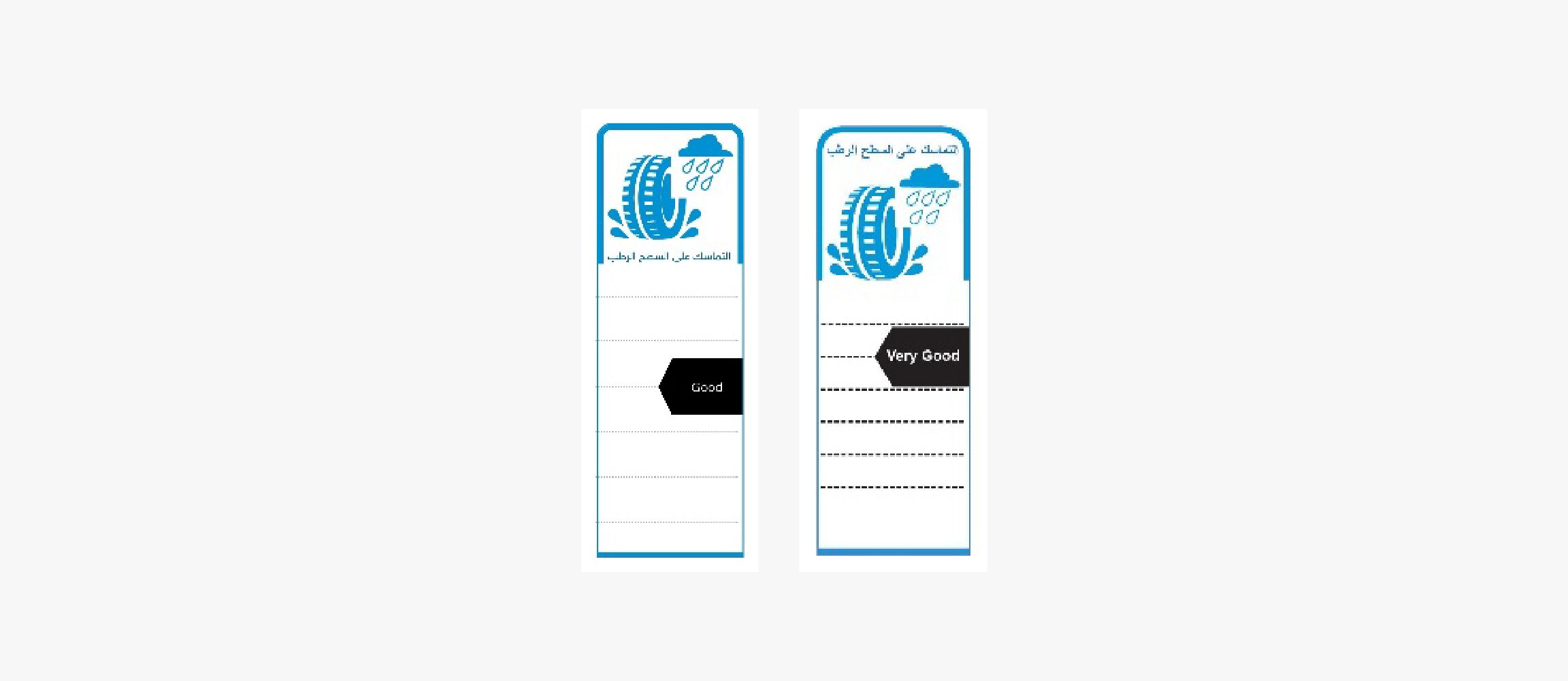
Warranty
Tire Labelling
Disregarding any of the safety precautions and instructions
contained in this information.
Sheet may result in tire failure or explosion causing serious personal injury
or death.

What is GSO, SASO Label?
GSO, SASO Energy Efficiency label for Tire offers helpful information for customers to purchase tires enabling them to check the tires characteristics. Aside from information on the label customers can also evaluate excellent performance results by consulting charts and graphs which detail the running performance and numerous tests. The aim is to lead a market transformation towards a more fuel-efficient, safe and low-noise tire. It will also pave the way for competition to run on tire performance and price, which will in turn stimulate investment in research and development.

Labelling Criteria
1. Fuel Efficiency
Fuel efficiency is measured by the rolling resistance (RR) of tires. Rolling
resistance is the resistance that occurs when a round object such as a ball
or tire rolls on a flat surface in a steady velocity straight-line motion.
It is caused mainly by the deformation of the object, the deformation of the
surface, or both.
Additional contributing factors include wheel radius, forward speed, surface
adhesion, and relative micro-sliding between the surfaces of contact. It
depends very much on the material of the wheel or tire and the sort of
ground.

Six classes from Very Poor (least efficient) to
Excellent (most efficient)
| Rolling Resistance | PCR (C1) | LTR (C2) | TBR (C3) |
|---|---|---|---|
| Excellent | RRC ≤ 6.5 | RRC ≤ 5.5 | RRC ≤ 4.0 |
| Very Good | 6.6 ≤ RRC ≤ 7.7 | 5.6 ≤ RRC ≤ 6.7 | 4.1 ≤ RRC ≤ 5.0 |
| Good | 7.8 ≤ RRC ≤ 9.0 | 6.8 ≤ RRC ≤ 8.0 | 5.1 ≤ RRC ≤ 6.0 |
| Average | 9.1 ≤ RRC ≤ 10.5 | 8.1 ≤ RRC ≤ 9.0 | 6.1 ≤ RRC ≤ 7.0 |
| Poor | 10.6 ≤ RRC ≤ 12.0 | 9.3 ≤ RRC ≤ 10.5 | 7.1 ≤ RRC ≤ 8.0 |
| Very Poor | N/A | N/A | N/A |
2. Wet Grip
Wet grip indicates the braking performance of tires on wet road surfaces and
is related to the safety performance of vehicles. Tires with low rolling
resistance have high fuel efficiency, but can have safety problems. This is
because tires with low rolling resistance have low adherence to roads when
the roads are wet. Accordingly, the European Council requires tire companies
to provide information about their tires adherence (or grip) when applying
the brakes on wet roads.

Six classes from Very Poor (longest braking
distances) to Excellent (shortest braking distances)
| Wet Grip | PCR (C1) | LTR (C2) | TBR (C3) |
|---|---|---|---|
| Excellent | 1.55 ≤ G | 1.40 ≤ G | 1.25 ≤ G |
| Very Good | 1.40 ≤ G ≤ 1.54 | 1.25 ≤ G ≤ 1.39 | 1.10 ≤ G ≤ 1.24 |
| Good | 1.25 ≤ G ≤ 1.39 | 1.10 ≤ G ≤ 1.24 | 0.95 ≤ G ≤ 1.09 |
| Average | N/A | N/A | 0.80 ≤ G ≤ 0.94 |
| Poor | 1.10 ≤ G ≤ 1.24 | 0.95 ≤ G ≤ 1.09 | 0.65 ≤ G ≤ 0.79 |
| Very Poor | N/A | N/A | N/A |

